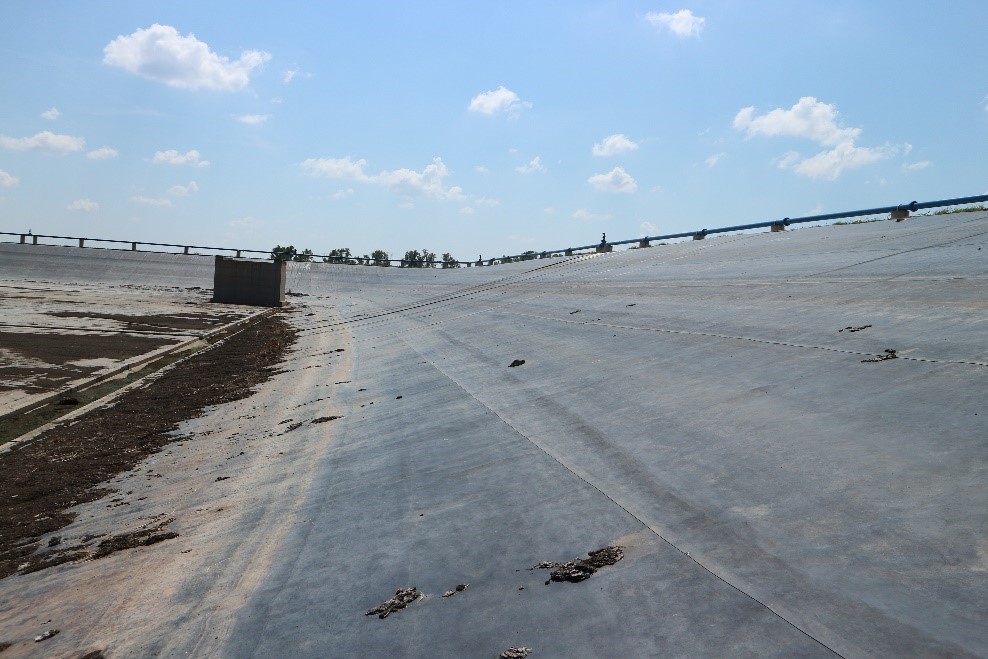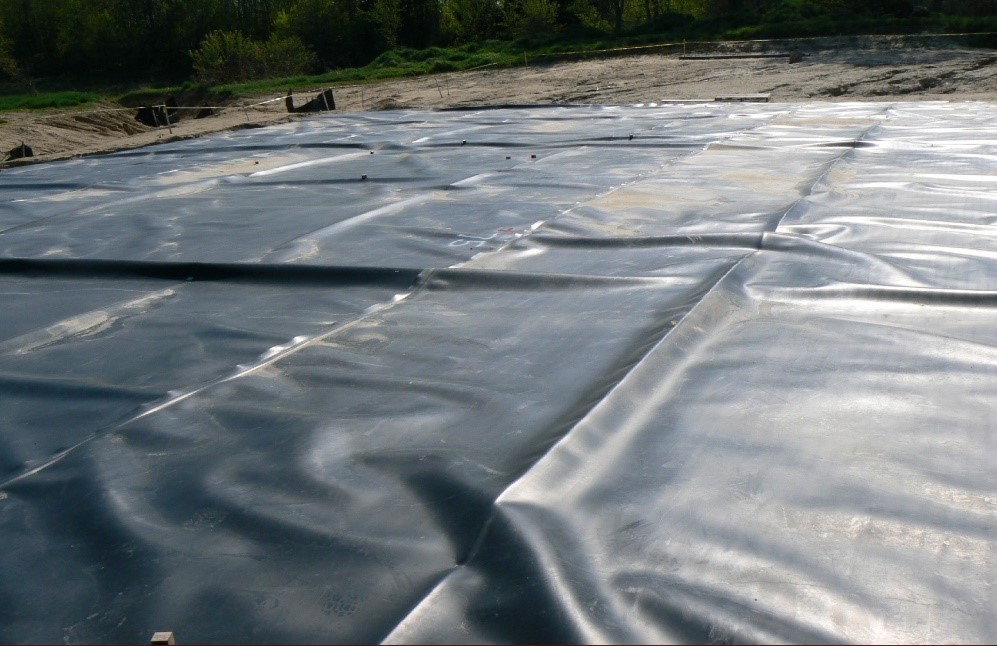The discussion in the geomembrane industry regarding how to overcome the effects of thermally induced wrinkling has become more active recently. Some geomembranes exhibit high levels of Thermal Expansion Contraction (CTE). As far back as 2007, recommendations were that geomembranes must be flat when backfilled (Koerner, Daniel, ASCE 2007), a recommendation that most agree is difficult to meet with many geomembranes.
Large wrinkles in some geomembranes are a concern for a number of reasons:
- Wrinkles are stress points that can result in cracking along the top of the wrinkles (Peggs, 2016). In buried applications, these can be a long-term crack potential.
- They create stress concentrating notches that can cause cracks in overlying concrete.
- Much has been written about the need for intimate contact between the geomembrane and the subgrade to minimize leakage and maximize the barrier properties of the geomembrane. See white paper "In Search of the Impermeable Geomembrane."
- Wrinkling on slopes manifests itself in the form of excess material traveling downslope, not contracting back upslope during lower temperatures, resulting in ultimate liner failure.
- If buried, the placement of the cover when a high crystallinity geomembrane is exposed is very difficult due to the undulations resulting from high CTE.
- If left exposed, high wrinkles create dams and make cleaning or scouring very difficult (see World’s Fair Park case study). In the case of buried geomembranes, wrinkles may be permanent regardless of long-term equilibrium temperatures that can impede flow of collected liquids.
As stated above, thermally induced wrinkles are an inherent property of some geomembrane polymers. One way to classify polymers used for geomembranes is either crystalline or non-crystalline (amorphous).

XR-5 Geomembrane, 92o F (33o C) Oklahoma USA
Source: Seaman Corp. (2019)
Crystalline materials have a very ordered molecular structure and might be subject to cracking when internal tie molecules are compromised by low stresses, a phenomenon accelerated in contact with wetting agents such as surfactants.
Amorphous materials have a random molecular structure and are not subject to stress cracking. Ethylene copolymers, such as the XR-5 Geomembrane, are amorphous, have negligible rates of thermal expansion contraction and have an extensive history in the geomembrane industry. Polyethylenes are crystalline, have high thermal expansion contraction rates and are the center of the concern in the industry regarding wrinkles.
 HDPE Geomembrane 63o F (17o C) Ontario Canada
HDPE Geomembrane 63o F (17o C) Ontario Canada
Source: Rowe et al. (2012)
For a low crystalline material, a loosely installed liner is desirable so you may see some minor amount of non-cyclic wrinkling, simply as a result of the membrane not being stretched from anchor to anchor tightly.
Who is responsible for this wrinkling problem? First, the wrinkling phenomenon is well known and not disputed for certain polymers. When these products are specified, allowances, methods and compensations must be incorporated into the design and installation to both the geomembrane itself and other site factors as well.
Here are five commonly discussed ways to deal with thermally induced geomembrane wrinkles.
- Install and cover in low-expansion conditions, such as no direct sunlight, cool conditions, temporary tents, etc.
- Backfill in a continuous fashion, pushing the wrinkles forward. Some amount of cutting and rewelding will likely be required. Of course, this requires cover and likely leaves residual stresses, particularly when the geomembrane reaches equilibrium temperature. One must consider, what good is zero wrinkles if the liner is full of welded repairs and stresses remain
- Weld panels together at the same temperature. Weld only when flat, store panels on level surfaces and mechanically fix panels along perimeters and/or other locations. These may be helpful but are not long-term solutions and, again, add stress points.
- Cool the liner with water to remove wrinkles prior to placing the cover (if used). Of course, you now have water management issues and are assuming uniformity with no added stresses.
- Use a lighter colored or alternate product (Ohio EPA 2014). Lighter color rather than black has lower heat adsorption, but the CTE is unchanged if the same product and the wrinkling is unavoidable. There exist alternate amorphous geomembranes that eliminate the wrinkling issue and still provide excelled chemical resistance and mechanical properties.
Consider which geomembranes will eliminate wrinkle management as an additional concern in your installation.



